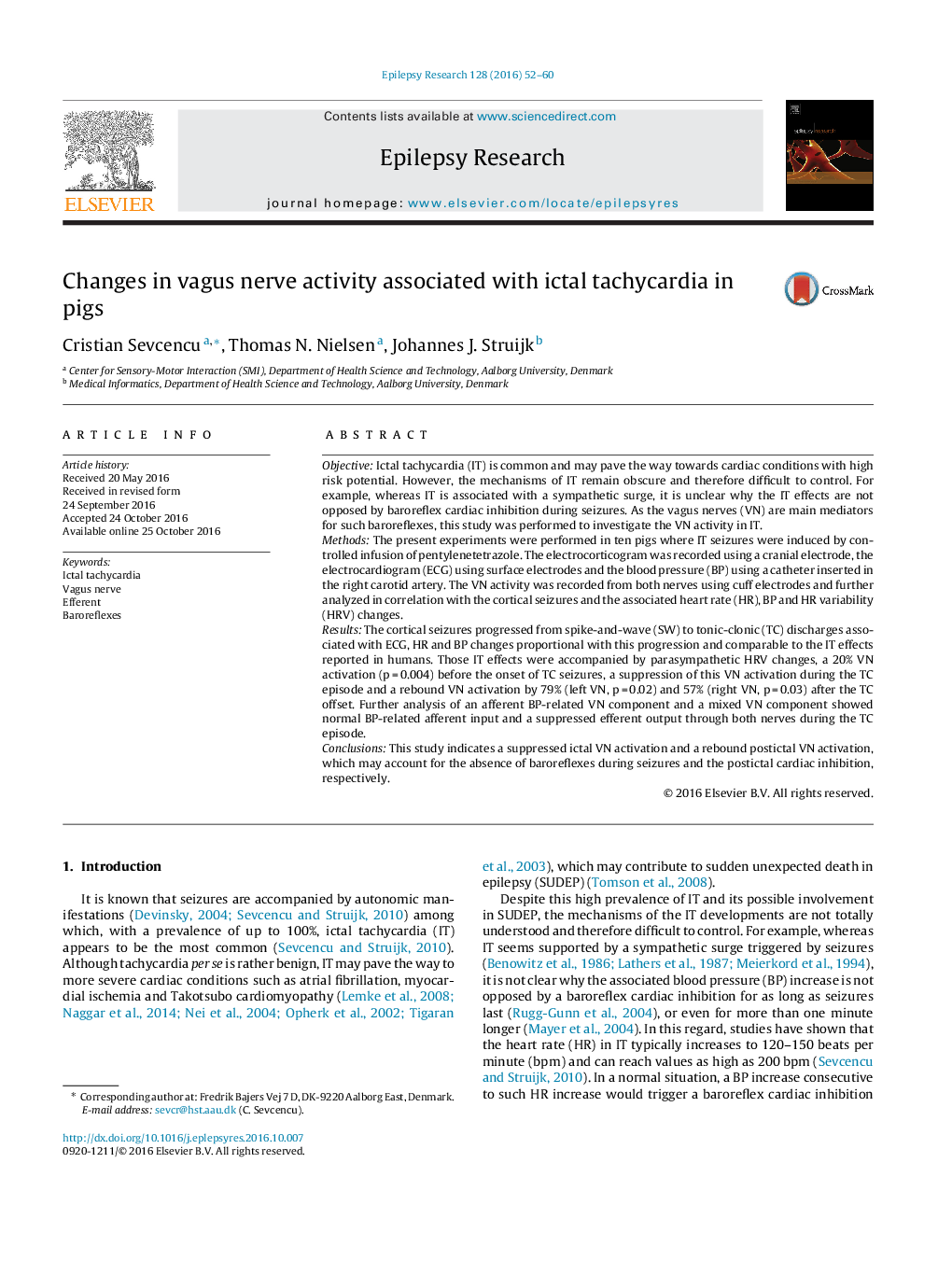| کد مقاله | کد نشریه | سال انتشار | مقاله انگلیسی | نسخه تمام متن |
|---|---|---|---|---|
| 5628621 | 1579895 | 2016 | 9 صفحه PDF | دانلود رایگان |
- A new animal model of ictal tachycardia (IT) was developed to study IT mechanisms.
- The IT is associated with a suppressed vagus nerve (VN) activation.
- This VN suppression seems responsible for the absence of baroreflex responses in IT.
ObjectiveIctal tachycardia (IT) is common and may pave the way towards cardiac conditions with high risk potential. However, the mechanisms of IT remain obscure and therefore difficult to control. For example, whereas IT is associated with a sympathetic surge, it is unclear why the IT effects are not opposed by baroreflex cardiac inhibition during seizures. As the vagus nerves (VN) are main mediators for such baroreflexes, this study was performed to investigate the VN activity in IT.MethodsThe present experiments were performed in ten pigs where IT seizures were induced by controlled infusion of pentylenetetrazole. The electrocorticogram was recorded using a cranial electrode, the electrocardiogram (ECG) using surface electrodes and the blood pressure (BP) using a catheter inserted in the right carotid artery. The VN activity was recorded from both nerves using cuff electrodes and further analyzed in correlation with the cortical seizures and the associated heart rate (HR), BP and HR variability (HRV) changes.ResultsThe cortical seizures progressed from spike-and-wave (SW) to tonic-clonic (TC) discharges associated with ECG, HR and BP changes proportional with this progression and comparable to the IT effects reported in humans. Those IT effects were accompanied by parasympathetic HRV changes, a 20% VN activation (p = 0.004) before the onset of TC seizures, a suppression of this VN activation during the TC episode and a rebound VN activation by 79% (left VN, p = 0.02) and 57% (right VN, p = 0.03) after the TC offset. Further analysis of an afferent BP-related VN component and a mixed VN component showed normal BP-related afferent input and a suppressed efferent output through both nerves during the TC episode.ConclusionsThis study indicates a suppressed ictal VN activation and a rebound postictal VN activation, which may account for the absence of baroreflexes during seizures and the postictal cardiac inhibition, respectively.
Journal: Epilepsy Research - Volume 128, December 2016, Pages 52-60
